How to get rid of nematodes on strawberries?
Nematodes are tiny worms that parasitize plants, including garden strawberries. Having settled on the leaves and roots, the pests damage the surface tissues and suck out the nutritious juice, as a result of which the bush quickly withers and dies. Proper processing of seedlings before planting and the use of special chemicals are methods of dealing with nematodes on strawberries.
What does a strawberry nematode look like?
Nematodes are malicious pests that can parasitize both garden crops and indoor plants. Strawberries are affected by the leaf nematode - a filamentous worm, the length of which does not exceed 1 mm, and the body has a round shape and gradually tapers towards the rear.
The worm's oral cavity is equipped with a special organ, similar to sharp forceps, with which the pest bites through the surface tissue and injects a special secret into the plant. The chemical reaction between the injected liquid and the juice produces a nutrient that is completely absorbed by the nematode.
There is some visual difference between females and males of the same species in color and body shape - females look more round and have a yellowish tint. The female nematode does not lay eggs, but bears inside herself, turning into a cyst when unfavorable conditions occur.
The number of eggs in one cyst is more than 1000 pieces. Moreover, the eggs are so well protected by the outer shell that they are not afraid of any weather conditions and chemical treatments. After lying in the soil for several years, the worms can hatch and continue their development without hindrance.
Important!
Nematodes are present in the soil always and everywhere, it is impossible to completely get rid of this parasite. However, only large accumulations of parasites in one place pose a danger to plants.
Research by scientists has shown that nematodes pose a significant danger to plants, if 1 sq. m of soil is parasitized by more than 1000 individuals.
Why is a nematode dangerous for strawberries?
The fight against nematodes on strawberries is greatly complicated by the fact that, due to its meager size, the pest is almost invisible. Basically, you can find out about his presence by looking at a bush of already affected strawberries:
- the plant lags far behind in growth and development from healthy specimens;
- the shape of inflorescences and fruits is disturbed;
- leaves become small and brittle, numerous swellings can be found on the back;
- stems are short and thick.
To make sure that a plant is infected with a nematode, you need to carefully examine its root system. Infection is evidenced by numerous white cysts, in shape and size, resembling poppy seeds, attached to the filaments of the roots. The root system of the affected plant is weakened and poorly developed.
There is another way to detect nematodes. Leaves and flowers plucked from the affected bush must be crushed and immersed in water. After a few hours, microscopic white worms, similar to thin threads, can be seen in the solution.
The nematoda is also dangerous for strawberries because it carries infectious and fungal diseases, and a puncture made by a pest is an ideal place for bacteria to enter.
Very often the nematode chooses a single plant for attack and, having completely dealt with it, proceeds to the neighboring one. Therefore, in the beds where this pest feasts, characteristic bald spots are formed.
Strawberry nematode control drugs
It will not be possible to completely get rid of the nematode, however, thanks to the action of some chemicals and control methods, it is possible to significantly reduce the number of pests in the soil and make their presence safe for planting.
If the pests have not yet destroyed the plants, you can try to save them using the following drugs.
- In late autumn or early spring, before the appearance of buds, the plantings are sprayed with a 3% solution of copper sulfate. Processing is carried out in the morning or evening hours.
- "Phosphamide". Every 5 days, plantings of strawberries are sprayed with a 0.02% solution of the drug.
- "Heterophos". To prepare a working solution, 15 g of the chemical is dissolved in 8 liters of water. The resulting product is sprayed with plantings and shed soil between the bushes. Due to the high toxicity of the drug, excavation on the treated bed can be carried out no earlier than after a month and a half.
- Fundazol. This is an effective remedy for treating strawberries against nematodes, applied after harvest. The solution is poured into the soil between the seedlings and the wells are disinfected before planting young plants.
Important!
Even the most toxic insecticides do not affect the cysts of the pest, so the treatment must be repeated at least 4 times with an interval of 5 days.
How to prevent nematode breeding?
In order to prevent the reproduction of nematodes in a strawberry garden, preventive measures must be followed when planting and growing this berry crop.
You can bring the pest to your site with the ground and on the roots of the planting material. Therefore, when buying seedlings, you must carefully examine the root system. The roots must be clean and strong, without particles of unknown origin. And even an absolutely healthy plant should be kept in hot water before planting. The fact is that nematodes cannot withstand temperatures above + 40 ° C, and such heat treatment will not harm the plant.
When purchasing strawberry seedlings, one should give preference to varieties that are resistant to diseases and pests, for example, "Vnuchka", "Raketa", "Dessertnaya" and others. Before planting, young strawberry bushes should be disinfected with an aqueous solution of "Parathion", and new leaves should be sprayed with 1% Bordeaux mixture.
Fresh compost should be added to the soil before planting strawberries. It contains a fungus that is harmful to the nematode.
Advice
In order to prevent the appearance of nematodes on strawberries, it is necessary to follow the rules of crop rotation and transplant plants to a new place every 4 years.
You can plant next to the strawberry garden marigold, calendula or nasturtium... These flower crops release substances into the soil through the roots that have a destructive effect on parasites. In addition, you can dig a shallow groove around the bed and fill it with lime, which will scare away pests.
You should not arrange ridges with strawberries in places where tomatoes, potatoes, cabbage, carrots, beans previously grew. These crops are most favorable for the reproduction of parasites.
During the growing season, it is necessary to weed the plantings, removing the weed from the area and burning it. This will help to significantly reduce the nematode population.
Folk remedies
If it is not possible to process strawberries with chemicals, folk recipes, which are based on the beneficial properties of the most common products and plants, are suitable. Using folk remedies, you can significantly reduce the number of pests, while maintaining the harvest.
Here are some of the methods of processing without the help of pesticides.
- Hot water. Many experienced gardeners note the effectiveness of hot water treatment of strawberries. It consists in the following: they dig out the affected bushes and shake off the roots from the ground, and then wash them under a stream of cold water.Having finished with preliminary preparation, water heated to + 47 ° C is poured into a clean container, and the root system of the plant is immersed in it for 15 minutes. If the bush was attacked by adult nematodes, to destroy them, it is enough to bring the water to + 40 ° C and reduce the processing time to 10 minutes. In the event that it is necessary to destroy the eggs of the pest, the water must be made a little hotter (+ 55 ° C) and the roots must be kept in it for 20 minutes.
Important!
It is necessary to strictly observe the temperature regime, otherwise you can simply scald the plant - and it will die.
- Marigold. You can fight the nematode with the help of marigold infusion. The juice of this flower culture is the strongest poison for parasitic worms. To prepare the infusion, take 1 kg of inflorescences, pour 1 liter of water and insist for two days. Then the resulting product is watered with infected beds.
- Calendula. A decoction of marigolds is considered to be no less effective in the fight against nematode. To prepare this remedy, take 200 g of dry inflorescences, pour 5 liters of water and insist for a day, placing them in a warm room. The resulting infusion is used to treat strawberry bushes, watering abundantly once a week.
- Nasturtium. To prepare an infusion of nasturtium, 300 g of leaves are crushed and poured into 5 liters of cold water. The mixture should be infused for a day, after which it can be used once a week to water strawberries affected by the pest.
- Nettle. An armful of nettles is placed in a bucket or barrel and poured over with boiling water. After three days, the infusion will be ready. All that remains is to strain it - and you can water the strawberry beds. Penetrating into the soil, the nettle infusion will destroy the pests that have settled on the roots of the plant.
- Batun onion. Onions, taken in an amount of 200 g, are cut into small pieces and poured with 4 liters of water. It is necessary to process strawberries from parasitic worms with the resulting infusion once a week.
- Hogweed. A kilogram of raw materials is poured into 5 liters of water, insisted for a day and the resulting infusion is poured over the soil under the strawberry bushes. The hogweed is a poisonous plant, so all work with it must be carried out in special clothing and rubber gloves.
- "Dekaris". Pharmacy preparation "Dekaris" is no less effective means for killing nematodes. The tablet is dissolved in 1 liter of water and the plantings are treated against the pest at least four times with an interval of seven days.
The fight against a nematode on garden strawberries is a long and laborious business, therefore, due attention should be paid to the choice of seedlings, proper care and prevention. If, nevertheless, the pest attacked the strawberry beds, it is necessary to immediately process the plantings with one of the listed drugs.
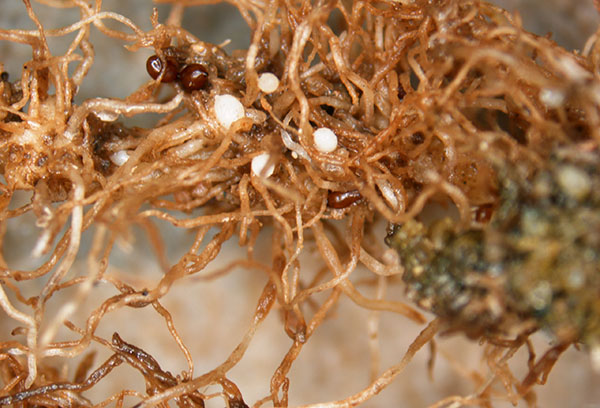
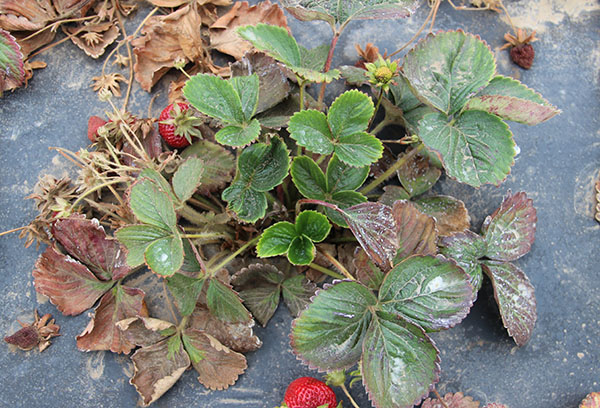
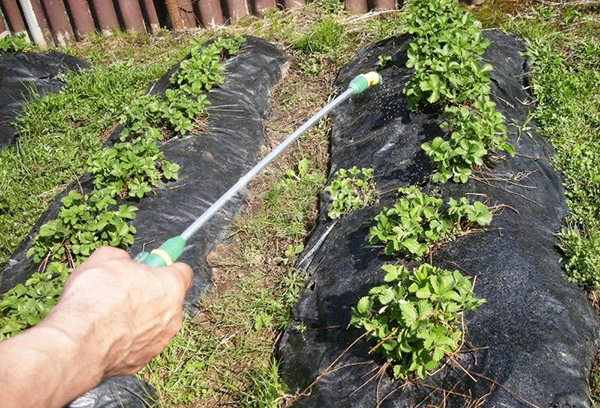
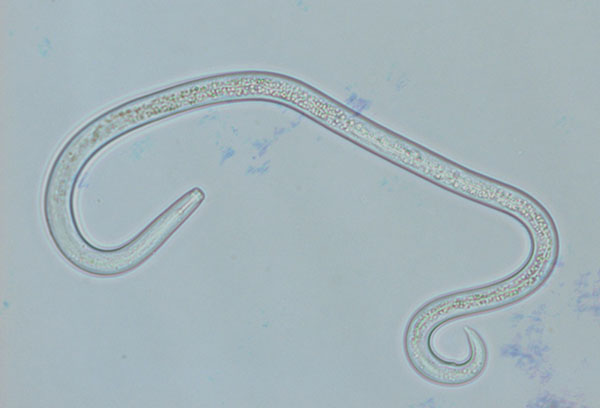
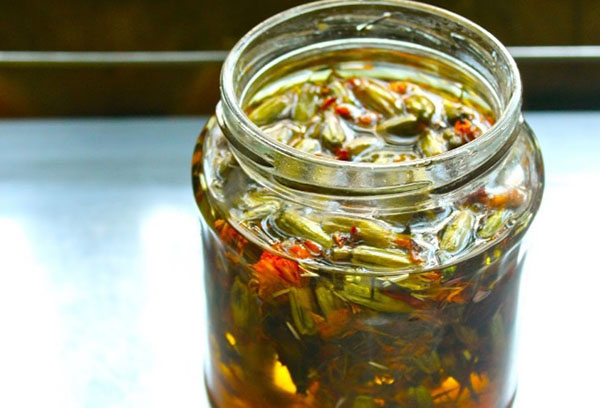
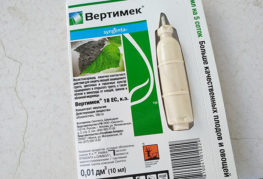
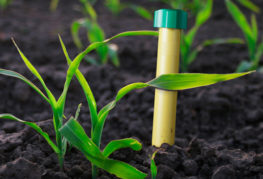
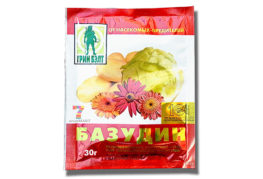
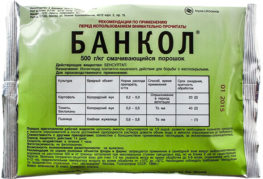
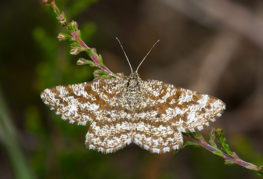
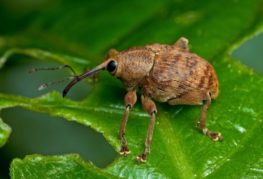
and will be published shortly.